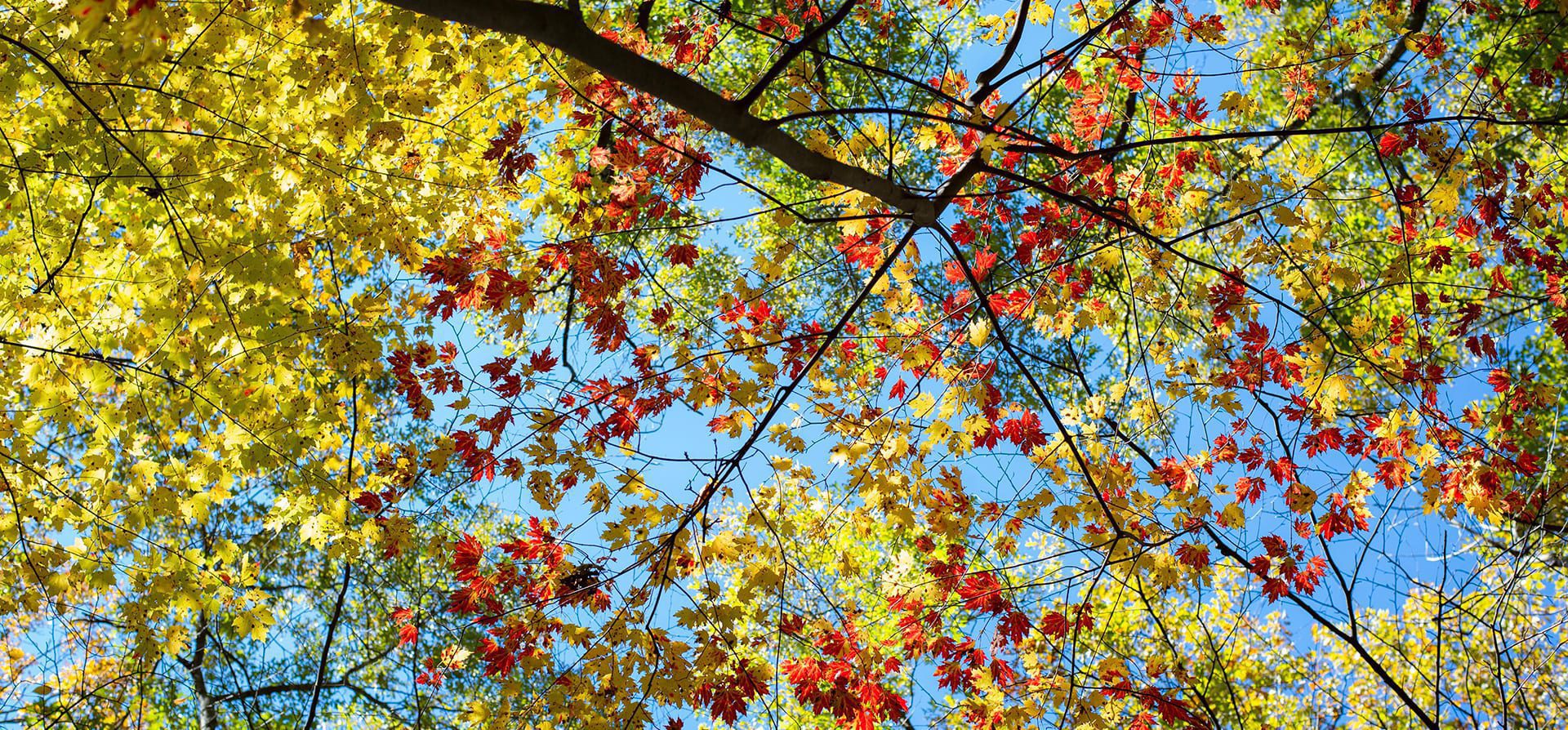Trees provide many environmental benefits, including producing huge quantities of oxygen required by living organisms, absorbing and storing much of the abundant carbon dioxide that we produce, and providing food, shelter and many other products for humans and wildlife. A landscape covered by trees is a forest — each forest having its own diverse assemblage of organisms and processes that link them together.
Today, the 3,830 acres of Black Rock Forest is home to 65 species of trees. In the late 19th century, Black Rock Forest had been heavily cleared and featured much pasture and farmland. Abandonment of these agricultural and extractive practices led to a long period of forest regrowth. From the 1920s through the 1940s, the young forest was managed to favor oak and other timber-producing species. The oldest age class of trees in Black Rock Forest is comprised predominantly of red, white, and chestnut oaks that are 100-120 years old, but rare wonders of over 280 years still exist. In some parts of the Forest, stands dominated by eastern hemlock and sugar and red maples still persist.
Different seasons highlight the attributes of different tree species. The first signal of the return of tree life in the spring is the burst of white flowers produced by the understory shadbush trees. They flower in mid-April before leaf-out of the deciduous forest. They are followed soon after by the colorful flowers of cherry trees, maples, and dogwoods and the sweet-scented black locusts. Full leaf-out in May is soon followed by the pink explosion of mountain laurel flowers in June, resembling a fresh fallen snowfall. Note that mountain laurel is considered a shrub, rather than a tree, because although they are woody perennial plants they typically have multiple stems and do not grow very tall.
During mid-summer, the ripening berries of cherries and other trees are prominent across the Forest. Fall in these oak-dominated forests features acorn drop in late September, a huge event for forest dwelling animals. In Black Rock Forest, it is not uncommon for oaks to drop a quarter million acorns per acre. The white and chestnut oak acorns are particularly sweet and sought-after. Deciduous leaves drop early in November but not before a magnificent October display of yellows, purples, reds and oranges as leaves stop producing green chlorophyll, revealing other pigments left behind as the trees prepare for winter.
Even in winter the trees give us much to enjoy. A few, like winterberry, retain colorful fruits into the winter while witch hazel (also technically a shrub) delights with yellow flowers that bloom in mid-January.

